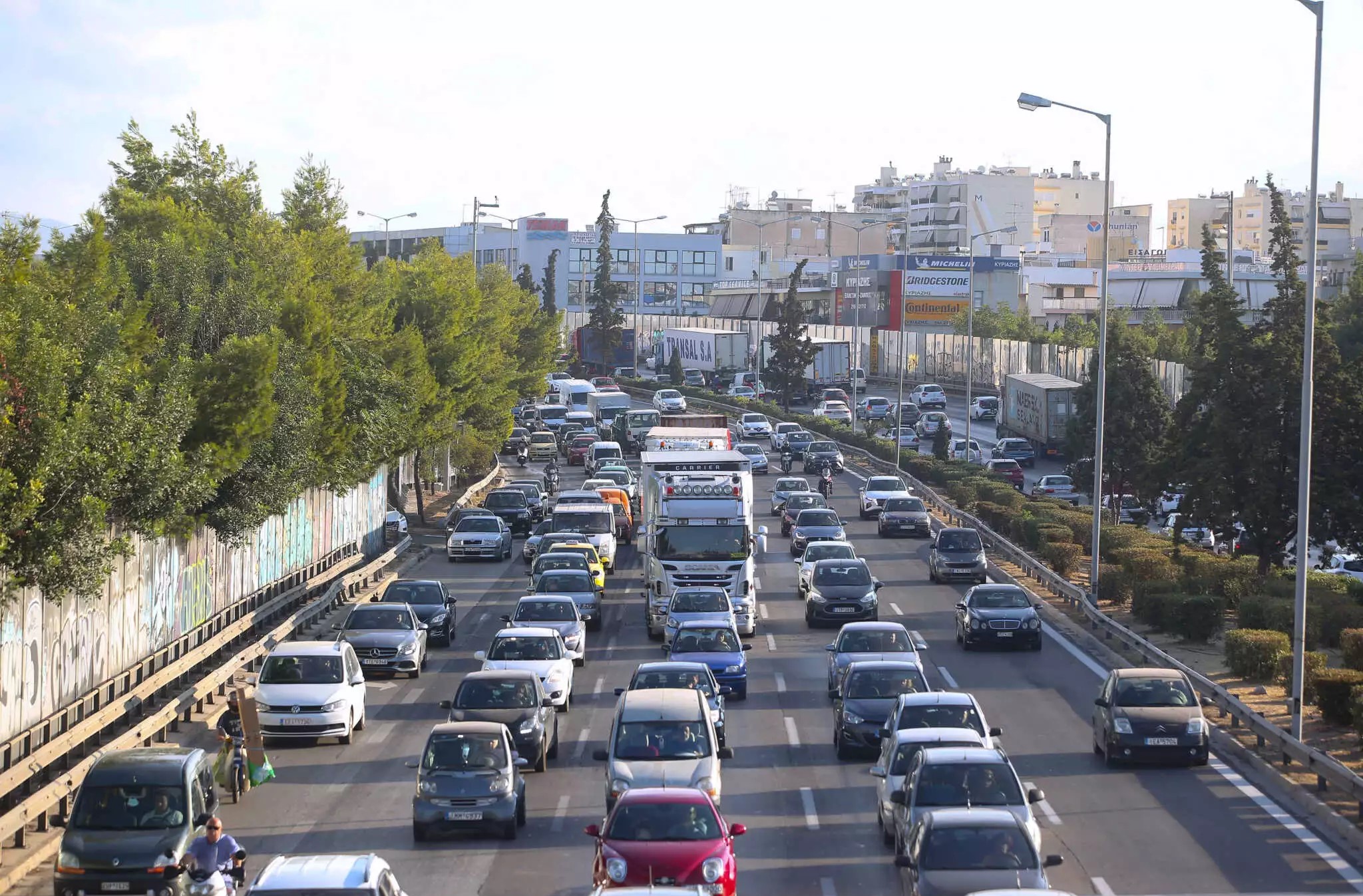One of the main causes of inconvenience is damages or crashes that result in the closure of one or more lanes for several hours. This significantly burdens the daily traffic. At two points along the Kifissos, permanent Traffic Police crane vehicles with drivers will be stationed, so they can intervene more quickly and directly where such incidents occur. According to this countemeasure, Traffic Police motorcycles with officers will patrol both directions of the Kifissos to ensure more intense and faster communication, response and interventions where needed.
Prof. George Yannis, Professor of Traffic Management and Road Safety and Director of the Department of Transportation Planning and Engineering at the National Technical University of Athens, was asked whether these measures can be considered as “aspirins” and if there is expected to be any change in the daily lives of commuters.
As Prof. Υannis mentioned, these measures are a very correct and good start. It is evident that for the scale of this axis, but also for its better functioning, it requires appropriate handling. He brought up the example of the Attiki Odos, where there are dozens of patrols and cranes to address the same issues related to incidents, crashes, or broken-down vehicles. He emphasized that “as a principle, considering that we had almost nothing, it’s already good that we understand the problem. We obviously need to give it more emphasis. This is an issue with the Kifissos, its operation, or when we have an incident. However, we can make countermeasures by not allowing variable cross-sections.”
Regarding the increase and decrease of lanes, he noted that we should have all three lanes open everywhere. For example, if there are initially four or five lanes and then reduced to three or four, congestion and problems arise. It is preferable to keep them closed where they are not needed to maintain a continuous flow, which represents another small improvement. These are specific operational issues for making incremental improvements. What we need to understand is that there is no hope for significant improvement in the Kifissos the coming years.
He emphasized that in the coming years, the situation will continuously worsen because we need to realize that in Attica, our roads are finite, just like in all cities worldwide. Furthermore, the road network in all cities worldwide, especially during peak hours, tends to balance on congestion. Therefore, claiming that traffic will be solved either in Kifissos or anywhere else is a hope that has no response worldwide, especially in Europe, which we compare ourselves to. Our constant focus should be on providing alternative solutions for commuters with Public Transport.
He then added that under no circumstances do we raise our hands in surrender, but we approach the future by serving the commuters and not the cars, as they do throughout Europe. It is a dead-end to try to accommodate all cars entering the city.
What needs to be done in Kifissos?
Nothing can be done on the Kifissos. Indeed, these specific operational measures mentioned earlier can be implemented, meaning no change in the cross-section and better handling of incidents. These are specific issues, and we will see a small improvement.
In response to the question of whether the Athens Ring should be widened, the answer comes immediately: “We have so many vehicles that even this measure is not sufficient. Furthermore, the Athens Ring is not monitored, if it is widened for a specific period, it could provide some relief. But still, the number of commuters increases every day and every year. The solution to ensure adequate service is not private cars because we don’t fit, as they don’t fit anywhere in Europe at least. We need to provide them with better alternatives through Public Transport. If you want something radical, as our theories suggest, the right approach on these axes, both in Europe and America, is to dedicate a lane to buses or high-occupancy vehicles, meaning reducing the energy lanes.”
Nevertheless, there are objections that if lanes are reduced, absolute chaos will prevail. Additionally, claims exist that citizens use their cars for a specific reason, even with the high cost of gasoline, because perhaps there is insufficient Public Transportation where they go. It may be a matter of working conditions or pressure that this population faces. Or they might use their cars because they have unconventional working hours; we are not in a pandemic situation with fixed working hours.
Prof. Yannis responds that one lane on Kifissos can accommodate approximately 750 vehicles per hour. If we create a high-occupancy vehicle lane, both private cars and buses can fit, serving 5.000 to 10.000 people in one hour in a single lane. Similar approaches have been implemented abroad, such as in Paris, Brussels, Barcelona and Milan.
Many may dispute that Athens does not have the same infrastructure or transportation systems as comparable cities abroad. Η απάντηση έρχεται άμεσα: The answer comes immediately: “The bus lane is the same in Barcelona, Athens and Paris; there is no difference. It is a lane that was used by cars before and is now used by buses”.
A solution to reduce traffic congestion appears to be increasing the use of Public Transport and dedicating exclusive lanes for them. Concluding, Prof. Yannis emphasizes that with this measure, everyone can travel much faster to their destination and many more to their jobs. We must stop thinking that there will come a day when our roads will accommodate all these cars. Things will only get worse if we don’t change our policies and make room for Public Transport.
Interview in the broadcast Behind the lines on Action 24 TV station in October 2023

